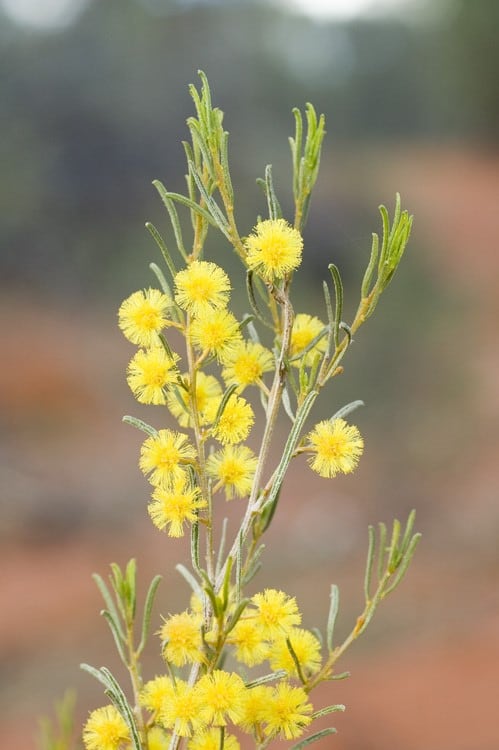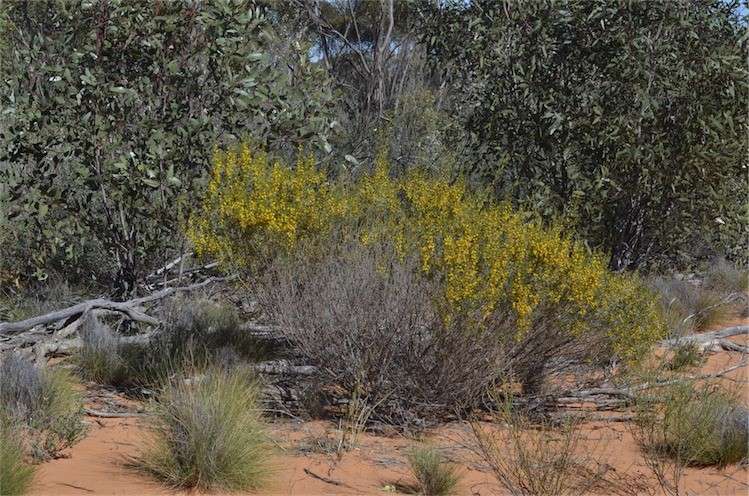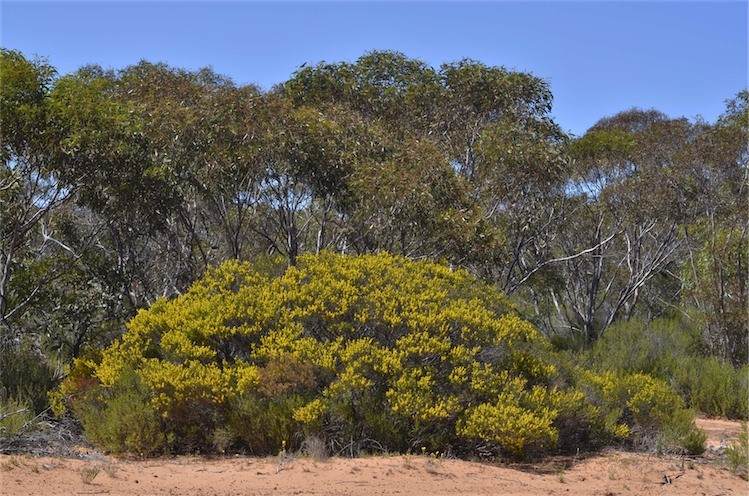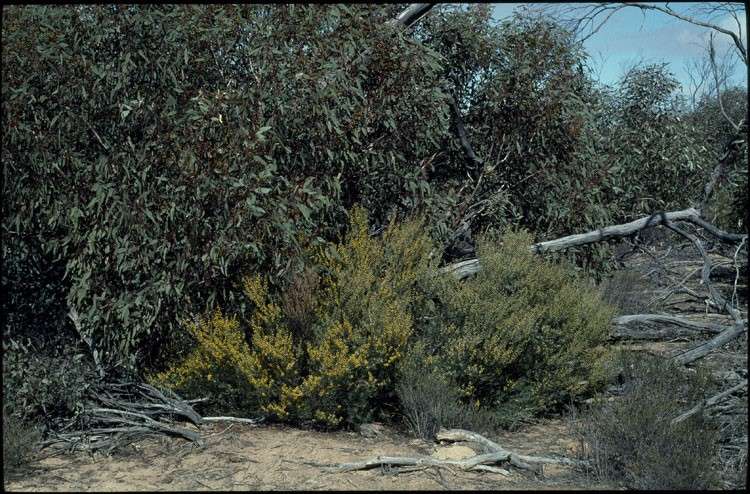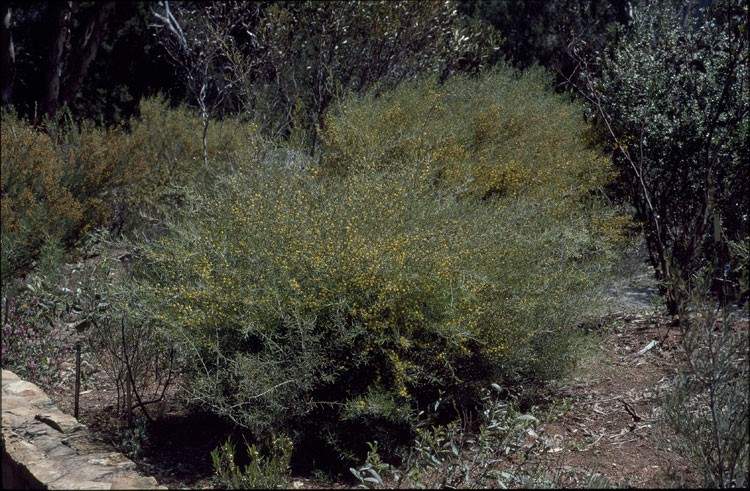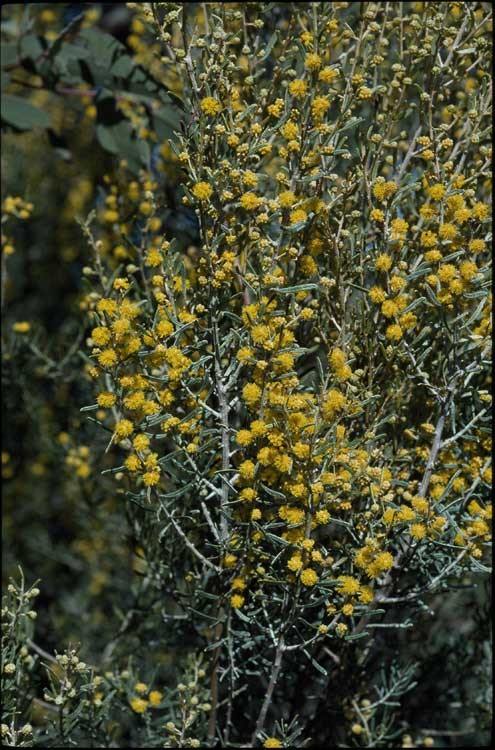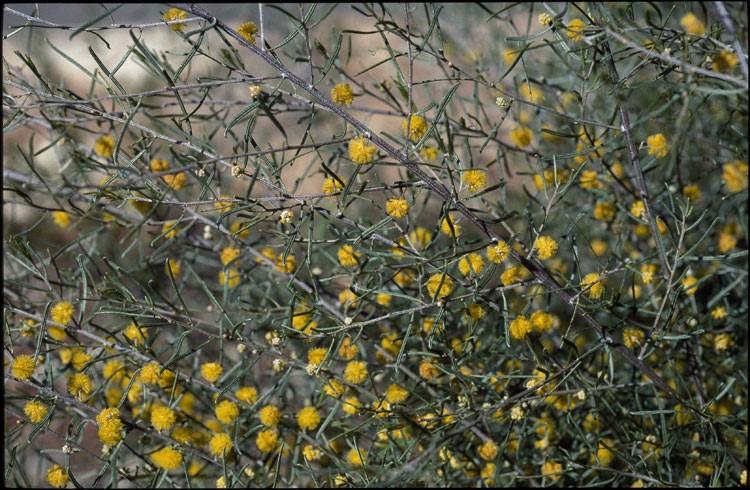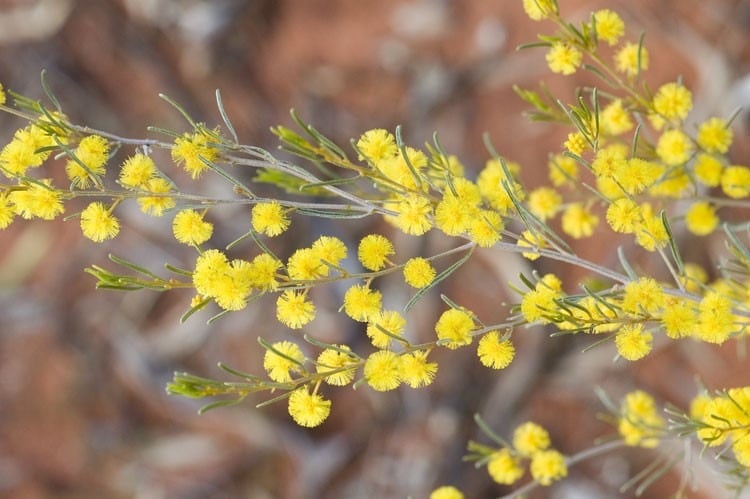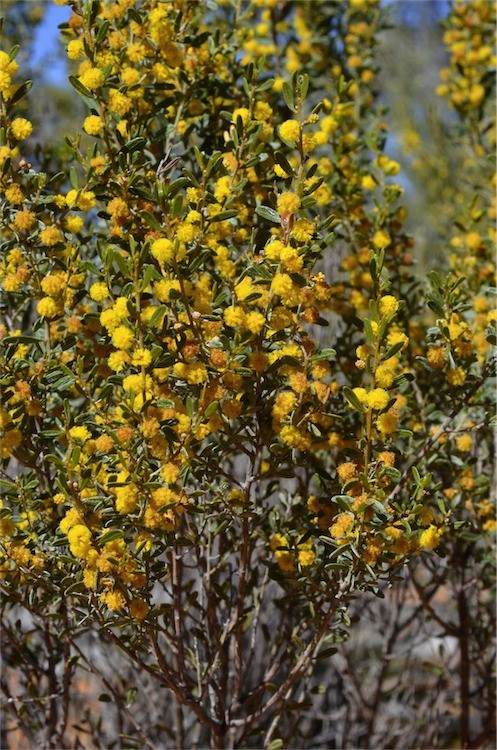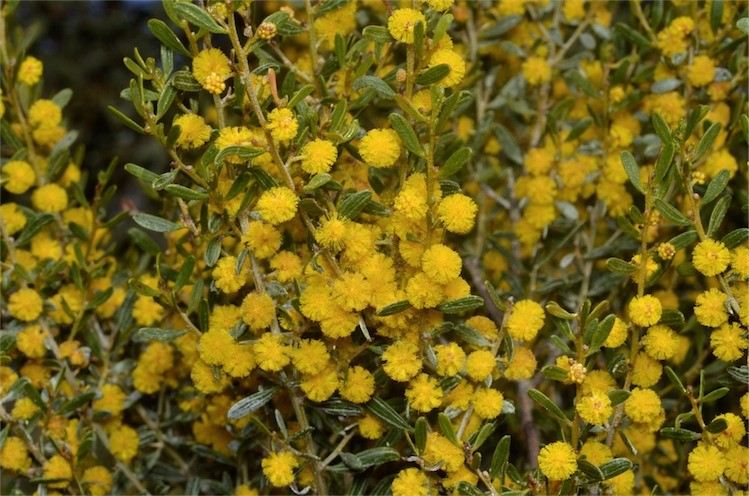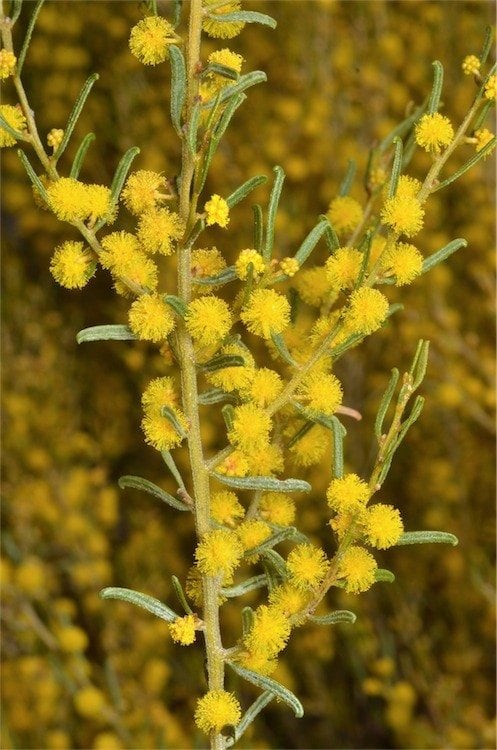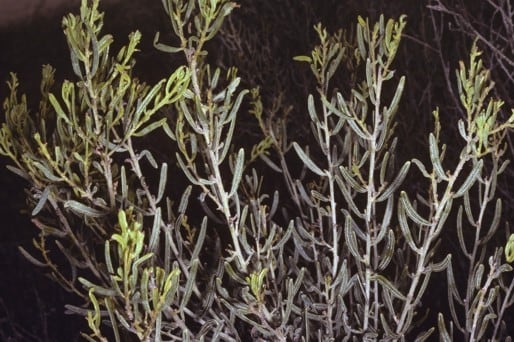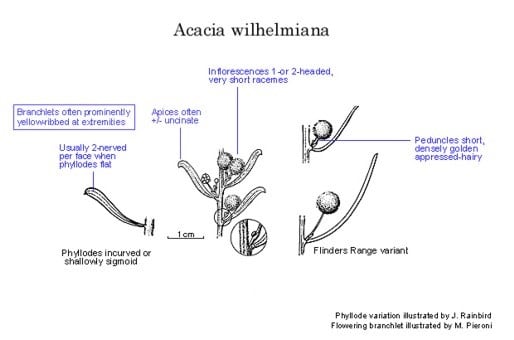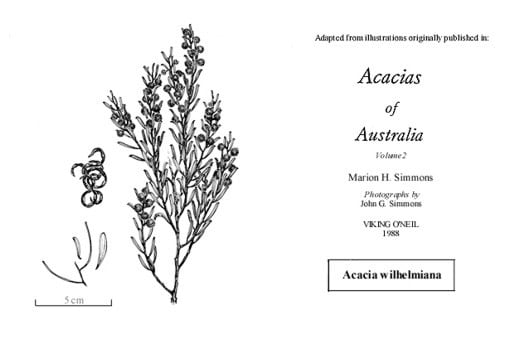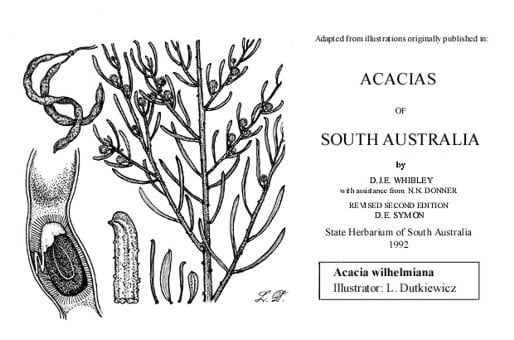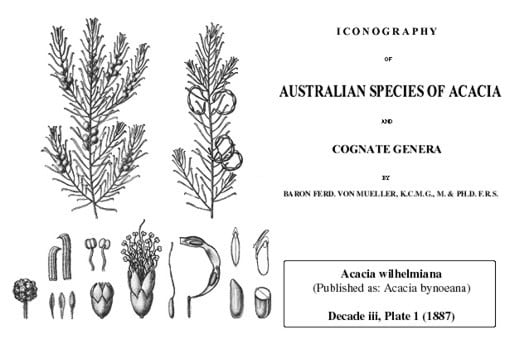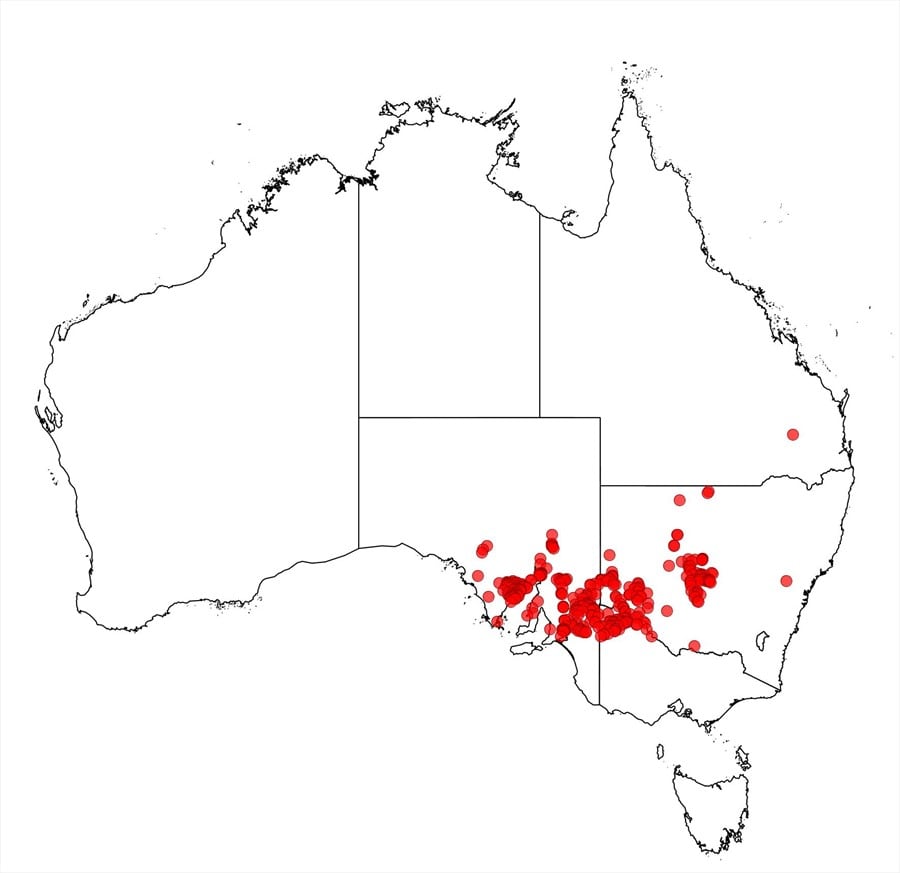Acacia wilhelmiana F.Muell.
WATTLE
Acacias of Australia
Common Name
Wilhem’s Wattle
Family
Fabaceae
Distribution
Restricted to mallee regions of S.A., N.S.W. and Vic.
Description
Dense spreading often resinous shrub to 2 (–3) m high. Branchlets sparsely to moderately appressed-puberulous, glabrescent, commonly yellow-ribbed at extremities. Phyllodes linear or (when broad) narrowly oblong-elliptic, incurved to shallowly sigmoid, sometimes incurved only at base otherwise straight, flat to terete, usually 1–3 cm long, 1–4 mm wide, l:w = 5–20, commonly ±uncinate, glabrous to subglabrous, with 2 (rarely more) nerves per face when flat, 5-nerved in all when subterete; nerves indistinct or prominent and sometimes mealy. Inflorescences 1- or 2-headed racemes with axes to c. 1 mm long, sometimes simple; peduncles usually 2–5 mm long, densely light golden appressed-puberulous; basal bract solitary; heads globular, usually 17–22-flowered, light golden. Flowers 5-merous; sepals c. 1/2-united. Pods strongly curved to openly 1 1/2-coiled, often twisted, to 6 cm long, (1.5–) 2–3 mm wide, glabrous, viscid when young. Seeds longitudinal, oblong, arillate.
Habitat
Grows in sand or loamy sand on plains or dunes.
Specimens
S.A.: 58 km N Cowell, B.Copley 3080 (NSW). N.S.W.: 1.8 km W of Euabalong West, G.M.Cunningham 450 & P.L.Milthorpe (NSW). Vic.: 16 km SW of Hattah, G.R.Lucas 186 (PERTH).
Notes
Nomenclatural history of A. wilhelmiana is discussed by A.B.Court, Muelleria 2: 159–162 (1972). For a discussion of the publication date of this species in Defin. Austral. Pl., and in Trans. Philos. Soc. Victoria 1: 37 (10 Sept. 1855), see O.Seberg, Taxon 35: 262–271, 1986).
Specimens from the Flinders Ra. area, S.A., with peduncles 6–8 mm long, flowers 28–31 per head and some phyllodes 4.5–6 cm long, may warrant infraspecific status (e.g. M.Tindale s.n., NSW108539, PERTH).
Phyllodes are very polymorphic in both size and transverse sectional shape (varying from broad and flat to narrow and terete or sub-terete) and require further study to elucidate the complex patterns of variation. Specimens with narrow phyllodes resemble A. johnsonii, A. pilligaensis, A. burbidgeae and other members of the 'A. johnsonii group', but are distinguished by their golden-puberulous peduncles with a persistent basal bract and curved to coiled pods. Specimens with broad phyllodes resemble A. montana.
Acacia wilhelmiana together with nine close relatives (A. abrupta, A. ascendens, A. barattensis, A. brachypoda, A. cowaniana, A. gracilifolia, A. helmsiana, A. menzelii and A. viscifolia) comprise the ‘A. wilhelmiana group’, fide B.R.Maslin, Nuytsia 7: 221–228 (1990). Acacia viscidula (which has 4-merous flowers) and A. ptychoclada are possibly also related to this group. Acacia sclerophylla var. sclerophylla is sometimes confused with A. wilhelmiana.
FOA Reference
Data derived from Flora of Australia Volumes 11A (2001), 11B (2001) and 12 (1998), products of ABRS, ©Commonwealth of Australia
Author
Minor edits by B.R.Maslin
B.R.Maslin
This identification key and fact sheets are available as a mobile application:
URL: https://apps.lucidcentral.org/wattle/
© Copyright 2018. All rights reserved.
